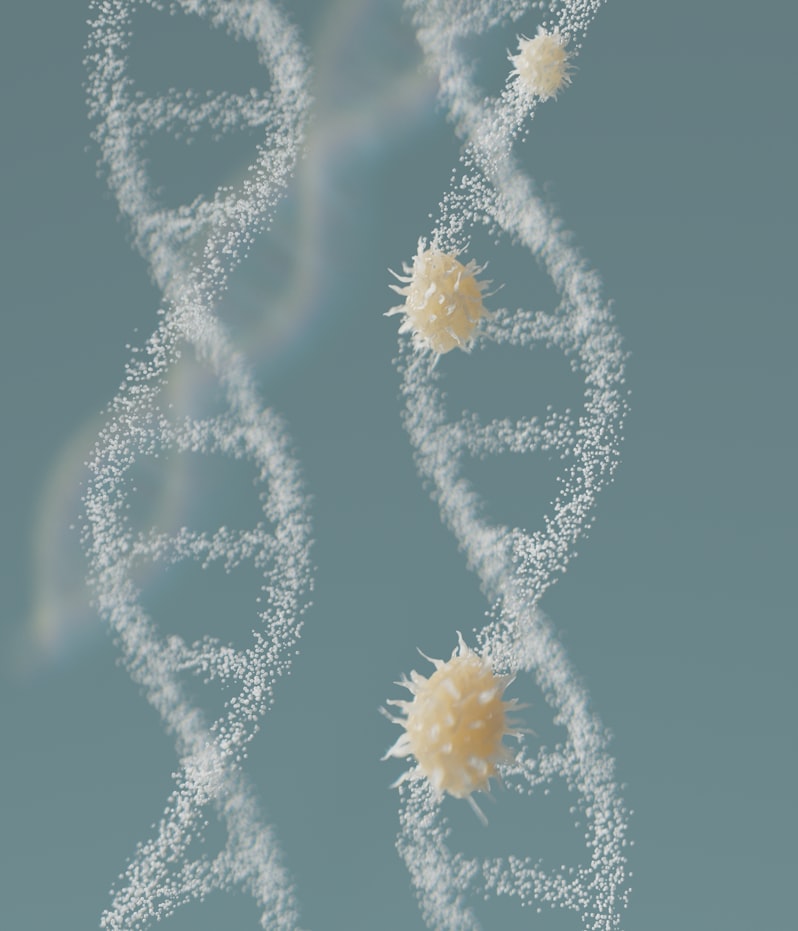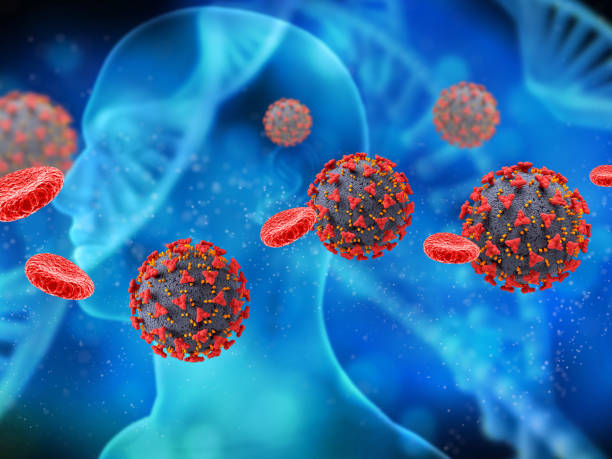A few weeks ago, I met a 22-year-old woman diagnosed with advanced breast cancer. Just days earlier, I had seen another 30-year-old woman facing the same devastating diagnosis. Such early-onset cases are not limited to breast cancer; similar patterns occur in colorectal and other cancers. When cancer appears unusually early, especially in multiple family members, it raises an important question: Could an inherited genetic mutation be driving the disease?

Cancer is fundamentally a genetic disease— every cancer results from changes or mutations in our cells’ genetic material. These mutations can disrupt normal cell functions, leading to uncontrolled growth. While most genetic changes occur during life due to environmental exposures, lifestyle factors, or random errors during cell division—and are not inherited—a small proportion (5–10%) of cancers arise from genetic mutations passed from parents to their children. These inherited, or germline mutations, are present in every cell of the body from conception and can significantly increase the risk of developing certain types of cancer, often at a younger ages. Cancers from such mutations are called hereditary cancers, and the group of related conditions is known as hereditary cancer syndromes.
What is a Hereditary Cancer Syndrome?
A hereditary cancer syndrome is a condition where a person has an inherited genetic mutation that significantly increases their risk of developing cancer, often at an early age. Individuals with these syndromes have a higher lifetime cancer risk and may develop multiple independent primary tumors. There are over 50 known hereditary cancer syndromes, each linked to mutations in particular genes. Identifying them is vital for recognizing at-risk individuals, providing appropriate genetic counseling, and implementing preventive and therapeutic measures.
Genetic Basis of Hereditary Cancer
Hereditary cancers arise from germline mutations in genes that regulate cell growth, DNA repair, and apoptosis. Present in every cell, these mutations pass through generations. Key genes categories include:
- Tumor Suppressor Genes: Regulate cell growth and division and promote apoptosis. Mutations can lead to uncontrolled cell proliferation. Examples include TP53, BRCA1, and BRCA2.
- Oncogenes: Normally promote cell growth and division. Mutations can make them hyperactive, driving cancer. Examples include RET and MET.
- DNA Repair Genes: These repair DNA damage. Mutations can lead to accumulation of genetic errors and cancer. Examples include MLH1, MSH2, and PMS2.
Common Hereditary Cancer Syndromes
1. Hereditary Breast and Ovarian Cancer Syndrome (HBOC):
- Genes Involved: BRCA1 and BRCA2.
- Cancer Risks: Up to 70% breast cancer; up to 46% ovarian cancer; higher prostate, pancreatic, and male breast cancer risks.
- Clinical Features: Early-onset or bilateral breast cancer; multiple relatives with breast and/or ovarian cancer.
2. Lynch Syndrome (Hereditary Nonpolyposis Colorectal Cancer, HNPCC):
- Genes Involved: MLH1, MSH2, MSH6, PMS2, and EPCAM.
- Cancer Risks: Up to 70% colorectal cancer; up to 60% endometrial cancer; higher risk of ovarian, stomach, urinary tract, and brain cancers.
- Clinical Features: Early-onset colorectal cancer; multiple primary cancers, and a family history of Lynch syndrome-associated cancers.
3. Familial Adenomatous Polyposis (FAP):
- Gene Involved: APC.
- Cancer Risks: Nearly 100% risk of colorectal cancer if untreated, higher duodenal, thyroid, and other cancer risks.
- Clinical Features: Hundreds to thousands of colorectal polyps in adolescence, which can progress to cancer if not managed.
4. Li-Fraumeni Syndrome (LFS):
- Gene Involved: TP53.
- Cancer Risks: Multiple primary cancers — sarcomas, breast, brain, adrenocortical carcinoma, and leukemia.
- Clinical Features: Early-onset and diverse cancers, strong family history.
5. Cowden Syndrome:
- Gene Involved: PTEN.
- Cancer Risks: Increased risks for breast, thyroid, endometrial, and other cancers.
- Clinical Features: Multiple hamartomas, macrocephaly, and characteristic mucocutaneous lesions.
6. Hereditary Diffuse Gastric Cancer (HDGC):
- Gene Involved: CDH1.
- Cancer Risks: Up to 80% diffuse gastric cancer ; lobular breast cancer.
- Clinical Features: Family history of diffuse gastric and lobular breast cancers.
Other hereditary cancer syndromes include:
- Multiple Endocrine Neoplasia (MEN 1 & 2) – Affects endocrine glands
- Gorlin Syndrome (Nevoid Basal Cell Carcinoma Syndrome) – Increases skin cancer risk
- Von Hippel–Lindau Disease – Causes tumors in multiple organs
- Xeroderma Pigmentosum – Extreme sensitivity to UV light, leading to skin cancer
Diagnosing Hereditary Cancer Syndromes
Not every family cluster of cancer is hereditary—shared lifestyle factors (e.g., smoking) also play a role. But these signs suggest a hereditary cancer syndrome:
- Cancer at an unusually young age
- Multiple cancers in one person (e.g., two breast cancers)
- Cancer in paired organs (e.g., both breasts or kidneys)
- Male breast cancer
- Multiple close relatives with the same or related cancers
Genetic Testing & Counseling
Genetic Testing
- Purpose: Identifies individuals with inherited cancer mutations.
- Methods: Next-generation sequencing, multi-gene panels, whole-genome sequencing.
- Candidates: Those with a family history of cancer, early-onset cancer, or multiple cancers.
Genetic Counseling
- Pre-test counseling: Explains the benefits and risks of genetic testing.
- Post-test counseling: Interprets results and discusses management options.

Management of Hereditary Cancer Syndromes
Surveillance and Screening
Purpose: Early detection of cancer through regular and enhanced screening protocols.
Examples:
- Breast cancer: Mammography, MRI, ultrasound, and clinical breast exams starting at an earlier age.
- Colorectal cancer: Colonoscopy starting at a younger age and at shorter intervals.
- Ovarian cancer: Transvaginal ultrasound and CA-125 blood tests.
Risk-Reducing Surgery
Purpose: To remove at-risk tissue before cancer develops.
Examples:
- Prophylactic mastectomy for high-risk individuals (e.g., BRCA1/2 mutation carriers).
- Prophylactic salpingo-oophorectomy for reducing ovarian cancer risk.
- Colectomy for individuals with familial adenomatous polyposis (FAP).
Chemoprevention
Purpose: Use of medications to lower cancer risk.
Examples:
- Tamoxifen or raloxifene to reduce breast cancer risk in high-risk women.
- Aspirin to reduce colorectal cancer risk in Lynch syndrome.
Targeted Therapies
Purpose: To treat cancers with specific genetic mutations using targeted drugs.
Examples:
- PARP inhibitors (e.g., olaparib) for BRCA-mutated cancers.
- Immune checkpoint inhibitors (e.g., pembrolizumab) for mismatch repair-deficient cancers such as those in Lynch syndrome.
Lifestyle Modifications
Purpose: To complement medical interventions by reducing overall cancer risk.
Examples:
- Maintaining a healthy diet rich in fruits, vegetables, and whole grains while limiting processed foods.
- Regular physical activity to maintain healthy weight and reduce cancer risk.
- Avoiding tobacco and limiting alcohol consumption.
- Stress management techniques such as mindfulness and adequate sleep.
Challenges in Managing Hereditary Cancer Syndromes
Managing hereditary cancer syndromes presents several challenges, including:
- Psychological Burden: Anxiety about elevated cancer risk.
- Cost and Accessibility of Genetic Testing: Testing is becoming more affordable, but access remains limited in some regions.
- Ethical Considerations: Privacy, insurance discrimination, and reproductive decisions vary by region.
- Variable Penetrance: Not everyone with a mutation develops cancer, complicating risk prediction.
Future Directions
Advancements in genetics and precision medicine are revolutionizing the management of hereditary cancers:
- CRISPR and Gene Editing: Potential to correct mutations.
- Polygenic Risk Scores: Refine risk by combining many genetic markers.
- AI and Machine Learning: Improve interpretation of genetic data and personalized treatment.
- New Targeted Therapies: Expanded mutation-specific drugs like PARP inhibitors fo.
- Liquid Biopsy: Blood-based tests for early detection and monitoring.
Conclusion
Hereditary cancer syndromes highlight genetics’ central role in cancer risk and prevention. Through genetic testing, counseling, and personalized strategies, at-risk individuals can benefit from early detection and tailored care. Emerging tools -gene editing, polygenic scores, AI and liquid biopsy-promise even more precise prevention and treatment measures in the years ahead.
FURTHER READINGS
National Cancer Institutes. (2024) The Genetics of Cancer.
Garutti, M et al.,(2023)Hereditary Cancer Syndromes: A Comprehensive Review with a Visual Tool.
Rahman N. Realizing the promise of cancer predisposition genes. Nature(2014)
Daly MB et al.,(2021) Genetic/Familial High-Risk Assessment: Breast, Ovarian, and Pancreatic.
Kastrinos F, Syngal S. Inherited colorectal cancer syndromes(2011).



